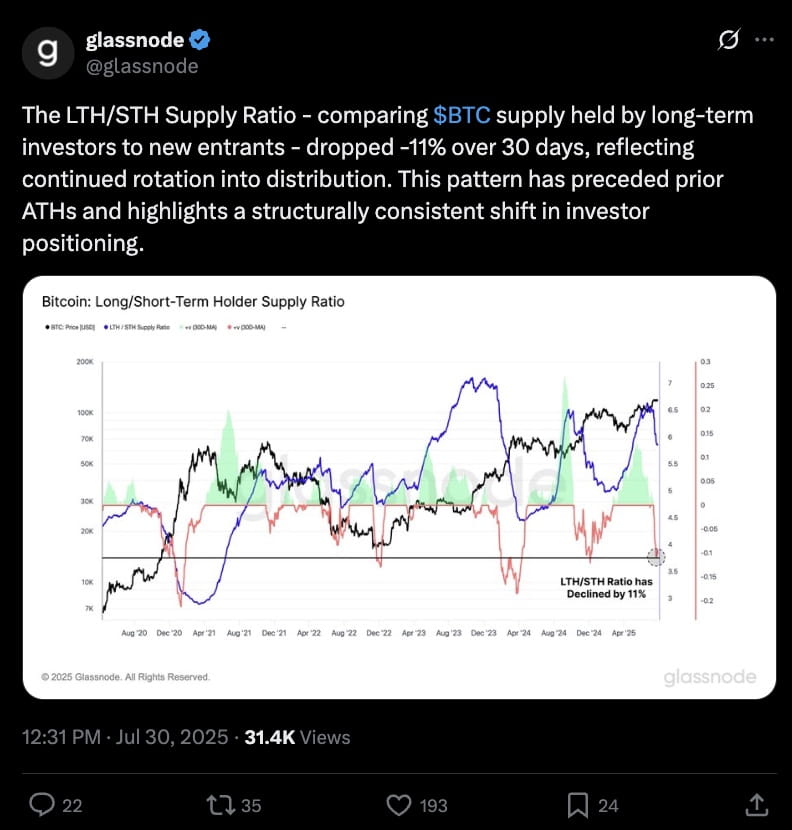Glassnode reports a sharp 11% drop in Bitcoin’s long-term to short-term holder supply ratio, echoing patterns seen before past all-time highs and suggesting active distribution.
Key Takeaways
Bitcoin’s LTH/STH supply ratio fell 11% in the past 30 days, signaling rotation from long-term holders into circulation.
Similar shifts occurred before prior Bitcoin all-time highs, suggesting structural positioning changes.
Analysts say this rotation isn’t necessarily bearish — it often reflects profit-taking before renewed price discovery phases.
Bitcoin’s LTH/STH Ratio Signals Market Rotation
New data from Glassnode shows that the LTH/STH supply ratio — the amount of Bitcoin held by long-term holders (LTHs) versus short-term holders (STHs) — declined by 11% over the past month.
This metric often serves as a barometer for investor behavior shifts, and its recent drop suggests that long-term holders are distributing coins to newer market participants.
“This pattern, which has preceded prior all-time highs, points to a structurally consistent shift in investor positioning,” Glassnode analysts wrote.
What Does the Drop Mean for Bitcoin?
Historically, LTH-to-STH ratio declines tend to coincide with:
Profit realization by long-term holders during strong rallies
Distribution phases before major price surges
Increased liquidity in the market for new participants
While some may view long-term holder selling as bearish, past cycles suggest it’s part of Bitcoin’s natural transition before new all-time highs.

Macro and Market Context
The latest LTH/STH shift comes as Bitcoin trades around $118,000–$119,000, with analysts debating whether BTC will:
Retest key support near $115,000–$116,000
Or push toward a breakout above $120,000
Meanwhile, macro headwinds — including the Federal Reserve’s upcoming policy decision and the risk of a USD short squeeze — add complexity to Bitcoin’s short-term trajectory.
Glassnode’s data suggests that Bitcoin is entering a familiar distribution phase, seen in past cycles before major breakouts.

